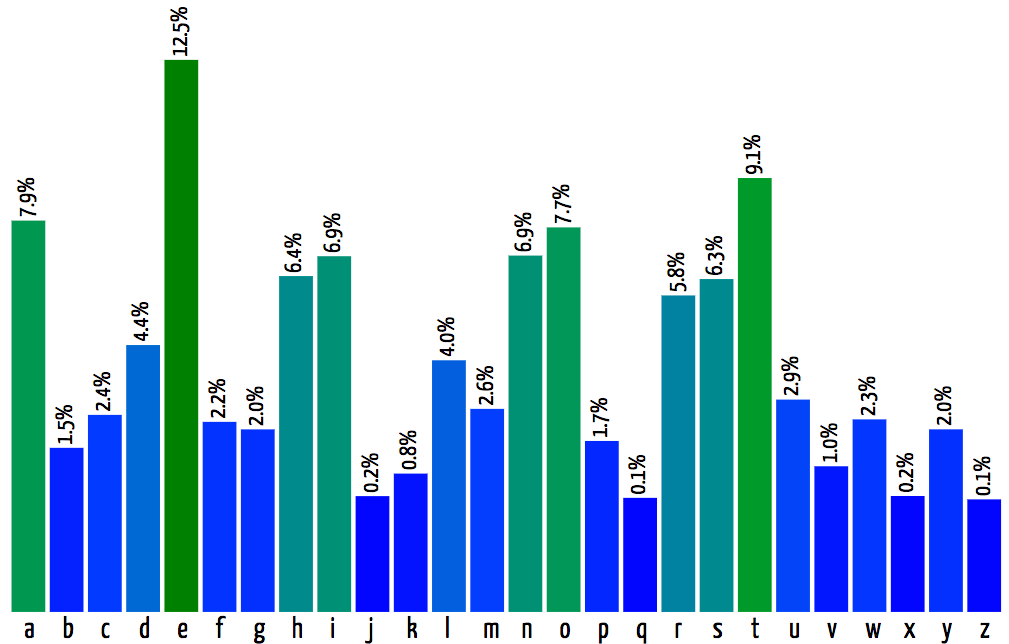Histograms are bar charts that are used to visualize distributions of numerical data. You can create a histogram if you have a dataset consisting of discrete samples of data in bins, or buckets, representing data intervals. The number of items in each bin represents the frequency, and is used for the bar height. The bar width is a fraction of the number of intervals.
The following diagram contains 26 buckets, each one representing a letter of the English alphabet. The height of each bar represents the frequency of each letter in a sample of 26 million characters from the top 50 books published by Project Gutemberg in September 2018:

The d3-array module also includes the d3.histogram() function, which is a histogram data generator. Calling this function...



